
Do you know why you should read this blog post? Even if you are not a woman? Because the issue of the obstacles women face in sports today does not only affect women. It affects the entire sports industry due to the stunted overall growth we then experience as a result. The next generation of female athletes and all of society suffer as well. Therefore we should not give in to the temptation of thinking that this is something only reserved for women.
Additionally, if we realize that the obstacles women face in sports are a collective problem, then we will realize that the solution is also the same. We have to do it all together.
In this blog post, we will discuss the three biggest obstacles women face in sports today. Thereafter, we will look at the way forward and the roles we can each play in propelling women’s sports forwards.
Before we dive right in...
Subscribe to our blog today to ensure that you never miss valuable posts such as this one. We are passionate about helping sports organizations deliver a world-class fan experience, because better fan experience means better business. So why not use this opportunity to the fullest?

The three biggest obstacles women face in sports today
There are many obstacles women in sports face today. Some are more complicated than others while some are more obvious than others. We have done a lot of research and have spoken to a lot of industry experts, including the women themselves. We have also worked with women’s sports organizations. And through our women in sports initiative – Women in sports: Beyond the hashtag, we have had many insightful conversations on this very topic.
But no matter how complicated things are, we have identified 3 obstacles women in sports face today that have created a vicious cycle almost too difficult to escape. And those are the obstacles we will be discussing in this blog post.

Limited media coverage

Limited marketing push and budget

Lack of funding and support
Let’s dive right into each.
By the way, we have a brief podcast version of this which you can check out.

Limited media coverage
Numbers never lie so we are going to let them do the speaking.
In America
Women’s sports get an estimated 4% of all media coverage.
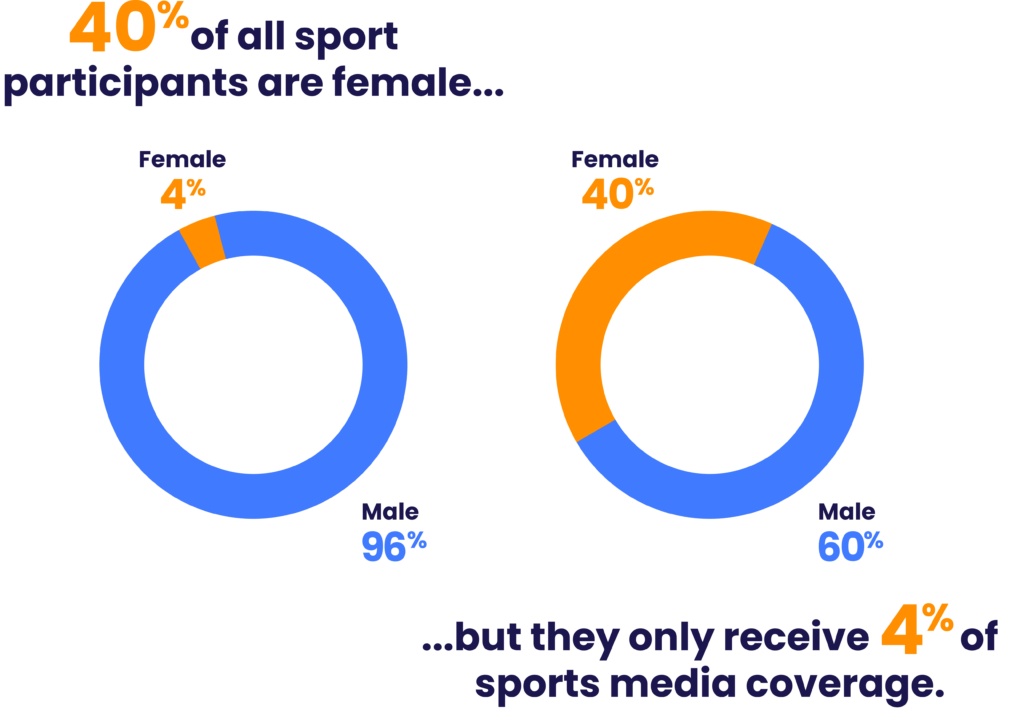
Source: Tucker centre for research on girls and women in sports
Australia and the UK
Women’s sports get an estimated 7% media coverage in both Australia and the UK.
Media coverage of athletes
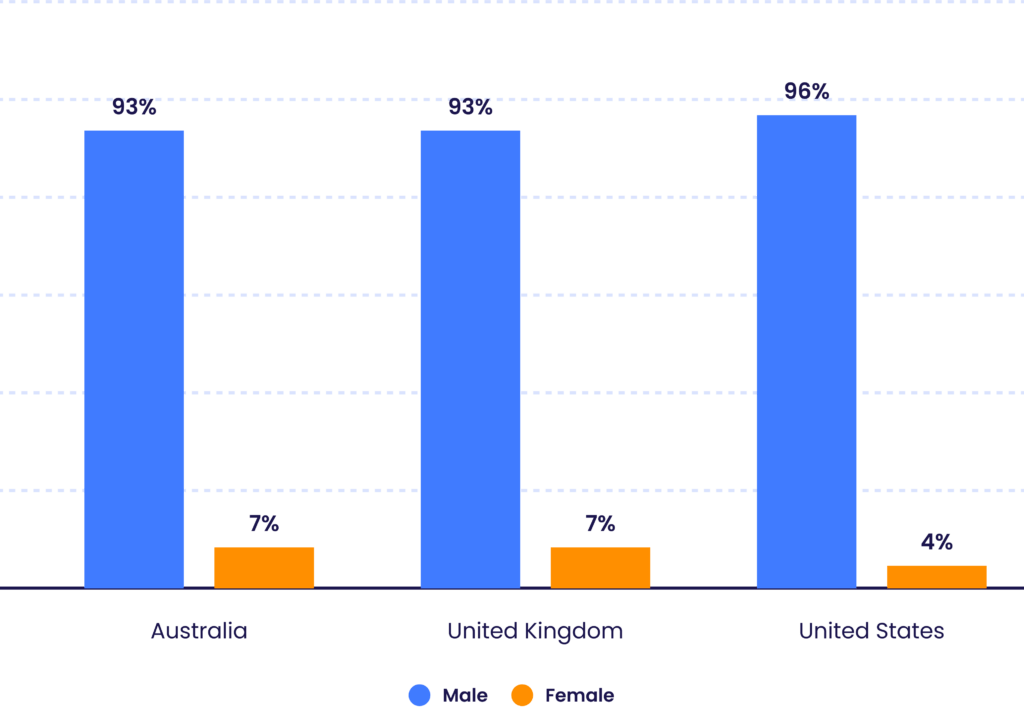
Malta and Greece
Women’s sports coverage in both Malta and Greece rarely go over 2% of all sports coverage
Sweden
The picture doesn’t get any better in Sweden either. Women’s sports coverage ranges between 3-6% of all media coverage.
Romania
Of all the countries surveyed by Women in Sports, Romania had the highest media coverage of women in sports. Women received 14% of the total coverage
France
Adage found that women’s sports received 15% of the total sports coverage.
Numbers never lie
It is obvious from the list above how little coverage women’s sports receive. If the highest coverage women’s sports receives is only 15% then surely there is a problem. Now of course the reason for this number is always debatable. Some claim that it is because of some inferiority women’s sports has in comparison to men’s. But YouGov did a study where they asked people why they didn’t watch women’s sports. The majority named limited media coverage as the number one reason.
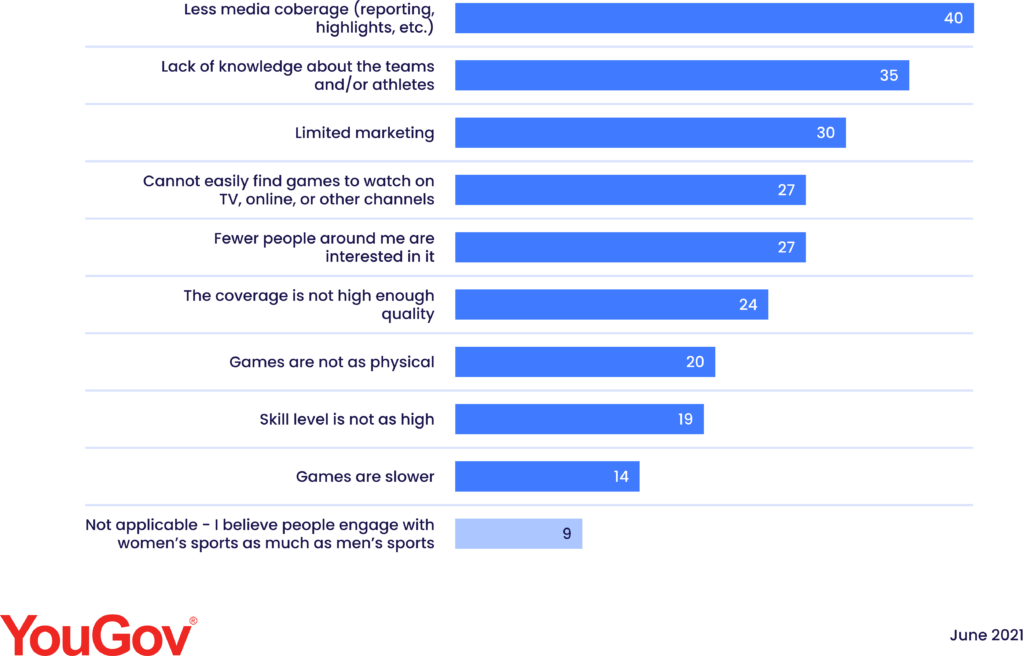

Heavily limits a women' sports' revenue potential

Negatively affects sponsorship value and prospects

Negatively affects the value of women's sports TV rights.

Keeps the sports team's brand awareness low

Limits the performance of the women's sports organization's campaigns especially marketing-wise
Think about this. How can supporters watch a game they don’t know is on? Would sponsors be willing to increase their funding for a team that no one knows anything about? And how effective can marketing campaigns be really if they are barely visible? This is a vicious cycle you see.
If women’s sports organizations don’t have media coverage, they won’t have the revenue. This revenue would have been gotten through ticket purchases and the sale of TV rights. So, then without the revenue, there is no marketing budget. Then of course without the marketing budget, things only get worse.

Limited marketing push and budget
Limited marketing push and budget is one of the biggest obstacles women face in sports today. Limited marketing is the third reason sports watchers gave, in the YouGov study, for not watching more women's sports.
Check out how you can take your sports marketing to the next level below.

Getting started is easy
Explore Demo Now >>
Undervaluation of women’s sports
TV ad spend
“During the 2019 Women’s Soccer World Cup, advertisers spent 96 million U.S. dollars on ads aired on U.S. TV networks belonging to Fox and NBCU Telemundo. In comparison, a year earlier, when the Men’s World Cup was broadcast on U.S. TV, advertising spending reached 350 million U.S dollars”
TV advertising spending during the FIFA Women’s and Men’s World Cup on TV networks in the United States in 2018 and 2019
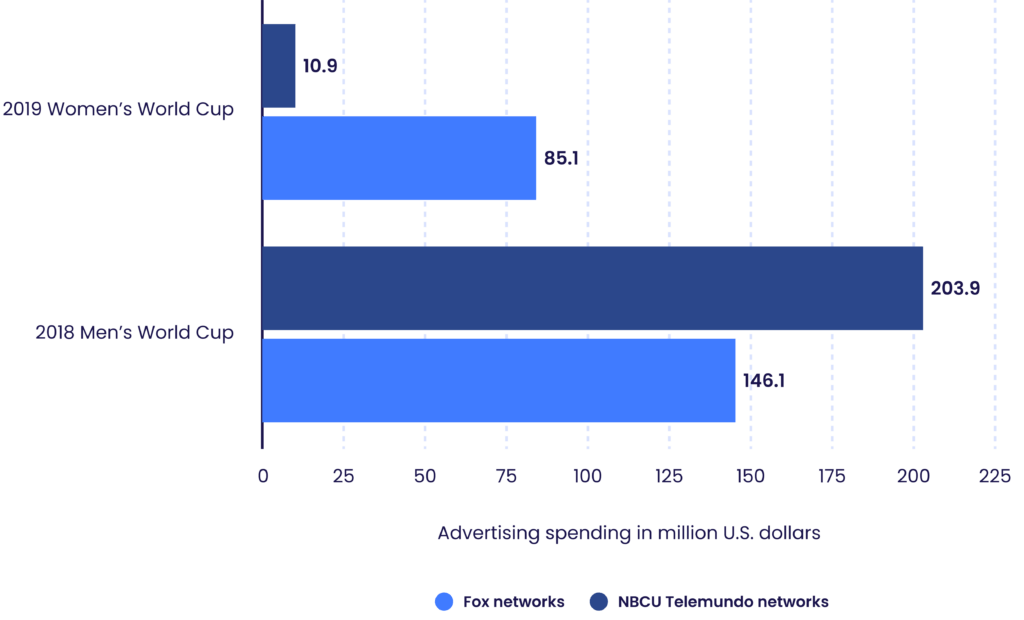
Source: Statistica 2022
However, “the women’s performance outdid the 2018 World Cup final by 22% while also sharing the stage with two other tournament finals in the world of soccer” reports Global Sports Matters.
World Cup Viewership (in millions)
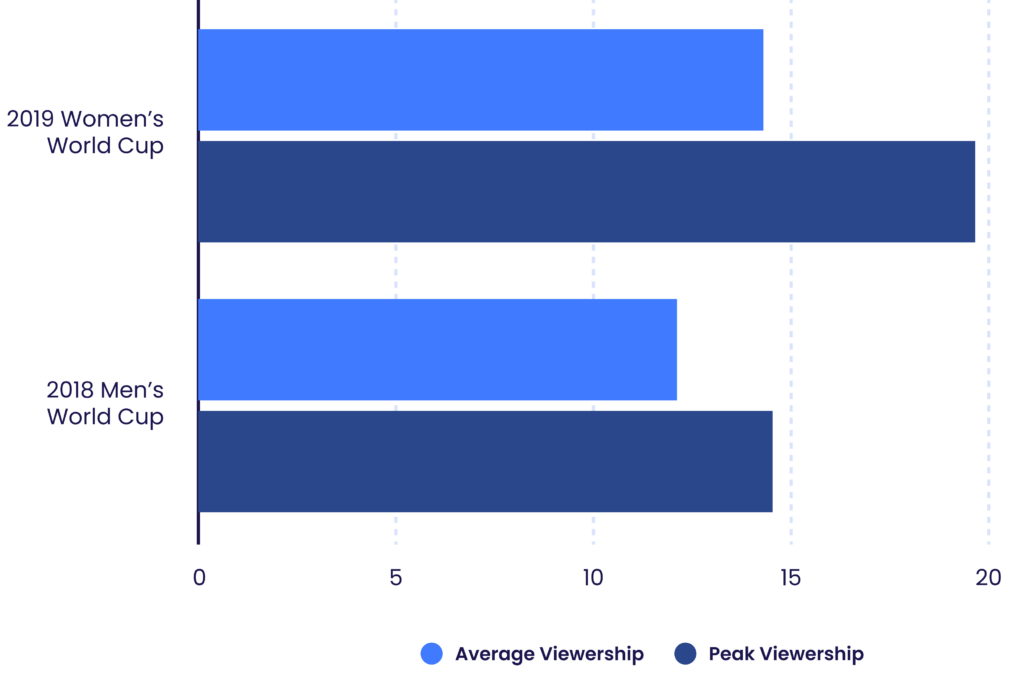
Source: Global Sports Matters
The picture that is being painted here is that even when women do well in sports, the revenue they make does not always match their performance. Evidently marketers, in this scenario, undervalue women’s sports.
U.S. ratings for the Women’s World Cup final topped the men’s for the past three cycles.
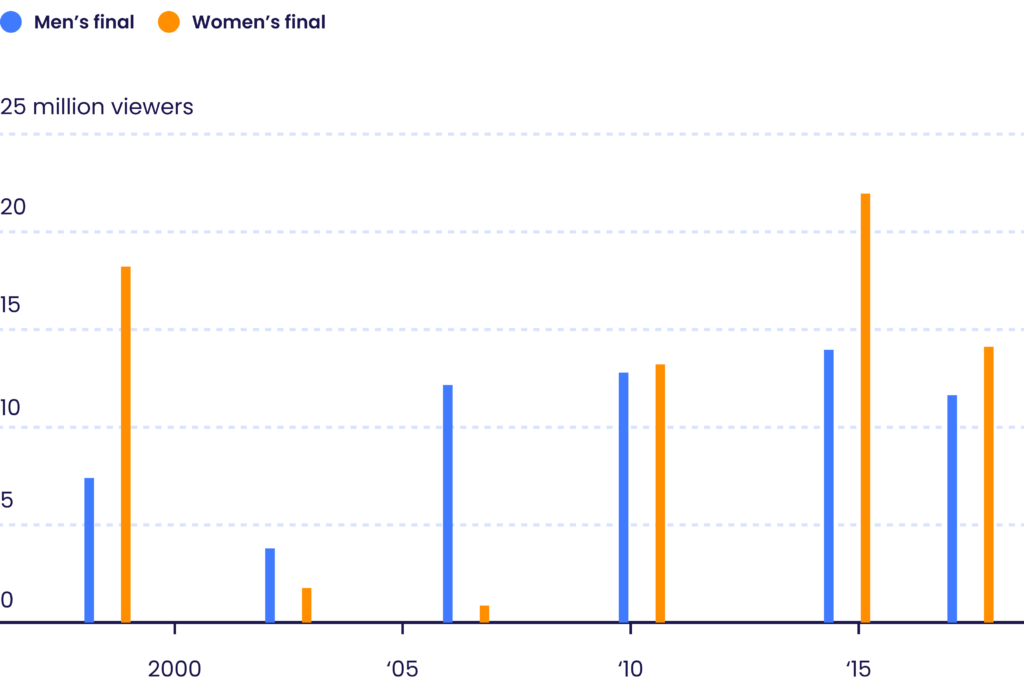
Source: Nielsen
Limited sponsorship deals

Women’s sports fans are 25% more likely to buy sponsor products than men’s

Brand recall among women’s sports fans is twice as likely as it is among those who follow men’s sport

Women’s sports fans are significantly more tech-savvy than men’s sports fans
With this information in mind, what percentage of the total sports sponsorship deals do you think women have?
1%
Yes, you read that right.
Women’s sports only receive 1% of all sports sponsorship
Women’s sports have been terribly affected by this limited sponsorship. With only 1% of sponsorships, how could women’s sports not suffer?
This leads us to our final point in the list of obstacles women face in sports…

Lack of funding and support
“Underfunding, understaffing and generally failing to support and recognize women in sports is standard practice…”
This part of the conversation is firstly, multifaceted. That’s because on one side the discussion is all about pay, employment, and play terms, and sporting facilities, amongst other things. While on the other side it involves leadership and management perceptions, ideologies and stereotypes, and attitudes towards women’s sports. Not only that, but the lack of funding and support proves itself to be a problem even in girls’ sports. That is, this affects young girls as well and not just professional athletes.
Secondly, this conversation seems paradoxically complicated and simple at the same time. Because, in the words of Kesin and Alfano “… there are no simple solutions to these problems; otherwise, they would already be resolved”. However, let’s try to break it down a little bit nevertheless.
This is why a lack of funding and support is one of the biggest obstacles women face in sports today…
Want to recive support on your journey?
Join our community today >>
Lack of access
“Girls have 1.3 million fewer opportunities to play high school sports than boys have. Lack of physical education in schools and limited opportunities to play sports in both high school and college mean girls have to look elsewhere for sports –which may not exist or may cost more money. Often there is an additional lack of access to adequate playing facilities near their homes that makes it more difficult for girls to engage in sports”
Decreased quality of experience
“As girls grow up, the quality level of their sports experience may decline. The facilities are not as good as the boys’ venues and the playing times may not be optimal. The availability of quality, trained coaches may be lacking in their community or these coaches may be more focused on the boys’ programs that have more money for training. Equipment, and even uniforms aren’t funded for many girls’ programs at the same levels as boys so their ability to grow and enjoy the sport is diminished. In short, sports just aren’t “fun” any more.” Women’s Sports Foundation
What we should learn from the state of girls’ sports
If a problem exists at the grassroots level, it is not going to go away without concerted effort. So if girls face limited access to sports, equipment, and uniforms, it is fair to assume that the problem will persist even when they become women. The controversy with the NCAA men’s basketball vs women’s basketball bubble set up proved this.
Other obstacles women face in sports due to lack of funding and support
Although we can’t fully go into each one of the points below, we thought they were at least worth a mention. These are some of the issues that result from the lack of funding and support women face in sports:
Limited representation at a higher level
Think coaches, managers, and general leadership. In the US for example, the introduction of Title IX led to a steep decline in the number of female coaches.
“Before 1972, over 90 percent of women’s coaches were women; by 2016, it was just over 40 percent. The numbers are worse when you look at the entire coaching pool; in 2020 only 23 percent of all collegiate coaches — for teams of either gender — were women”
Gender pay gap
This could be a blog post all on its own. But here are a few facts:
Men have higher prize money for competitions across most, if not all, sports. Although football and basketball prize money is some of the highest in women’s sports, the gender pay gap is also significantly higher than in other sports. Individual sports such as tennis prove to be more lucrative. In fact, female tennis players are some of the most recognizable athletes in the women’s division of sports. Think Serena Williams for example.
Prize Money for Major Sports Competitions
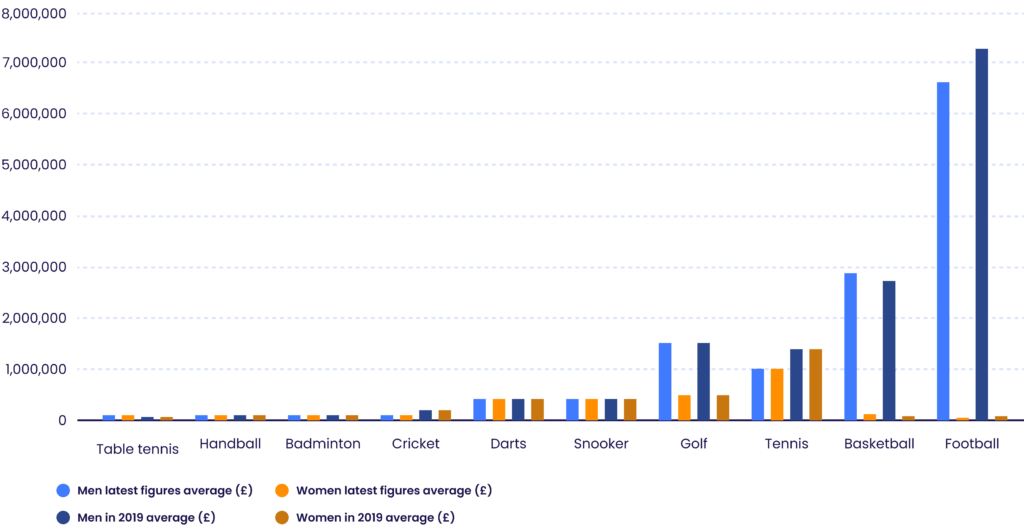
What now?
The beginning of the solution to any problem is acknowledgment. So hopefully you understand now that the “uproar” on gender equality in sports is not about “wokeism”. But rather, it is all a true reality. Now, of course, the reasons behind each of the issues we discussed above are many. Some are more justifiable than others. However, we have to be careful not to turn reasons into excuses.
Now that we know what some of the obstacles women face in sports today are, we are better equipped to solve them. And remember how we started this blog post by pointing out that this issue is our issue. And not just a problem for women in sports alone to solve? We want to reiterate that again. All stakeholders in the sports industry have a role to play. For example:
Steps taken by various stakeholders to reduce the obstacles women face in sports today
- In 2018, visa inked a seven-year deal with UEFA – becoming the first-ever sponsor of UEFA’s women’s football
- Heineken became an official sponsor of the Women’s Euro 2022, Champions League, and W series
- The United States Women’s National Football team finally won the right to equal pay
- The Irish government and the UK government pushing for a 40% representation of women in leadership positions in sports organizations by 2023
- The development of more organizations focusing on girls and women in sports. A good few examples include Voice in Sport, Futeboll da Forca and Connect Management Group. All these organizations serve different needs for girls and women in sports.
We practice what we preach
We don’t just write about obstacles women face in sports, we take actions to make a difference. That’s right. We recently launched our very own women in sports initiative called Women in Sports: Beyond the hashtag. Our aim with this initiative is to address the obstacles of “visibility”. Although we don’t own a TV station, we do have something that is equally as powerful – social media and digital platforms.
We aim to tell stories of amazing women in sports to help them get the visibility that they deserve. Social media and digital platforms are very crucial to the monetization strategy of female athletes nowadays. This is something that our friend Emily Bowe at Seven League wrote about. Do you know what visibility leads to? More revenue and more growth for women’s sports.
What strategies have you put in place to help women in sports overcome some of these obstacles?
Your invite
If you would also like to take a step in creating opportunities for women in sports but don’t know where to start, why not collaborate with us? Or if you are a woman in sports reading this article, why not join our initiative?
Although the obstacles women face in sports today are less than simple to solve, there is always something we can do.
Get in touch with us today so we can join forces in making a difference.
Leave a Reply